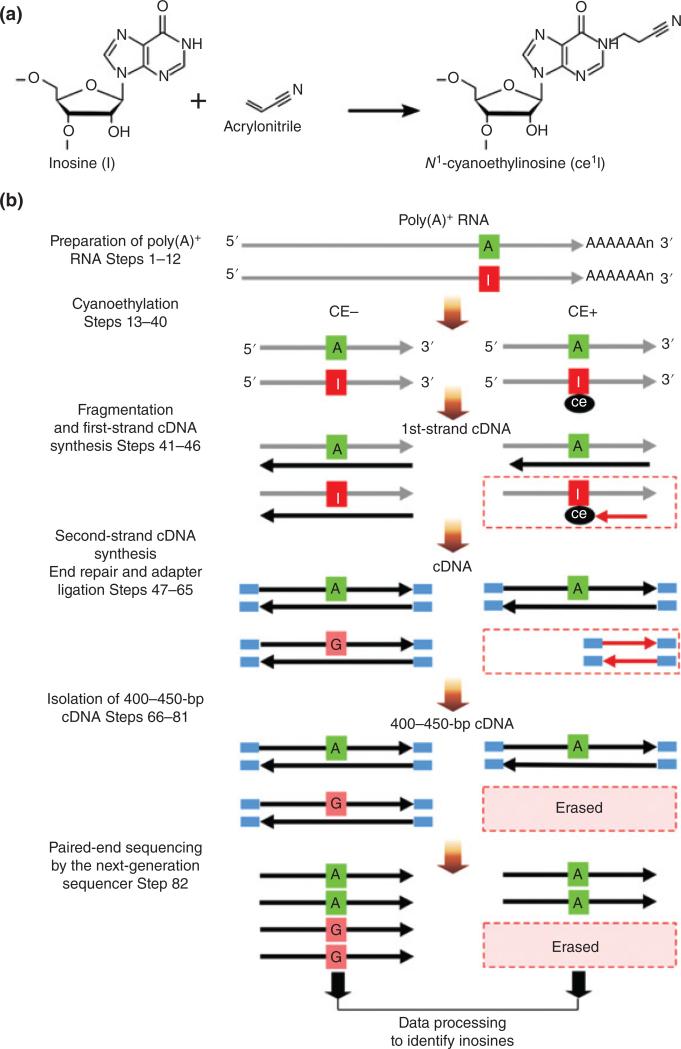FIGURE 5.
Chemistry and outline of ICE-seq. (a) Chemistry of inosine a cyanoethylation. Inosine (I) on an RNA strand is cyanoethylated with acrylonitrile to form N1-cyanoethylinosine (ce1I). (b) ICE-seq procedure. O Schemes without (CE− condition) or with (CE+ condition) cyanoethylation of RNA are shown on the left and right, respectively. RNA and cDNA are O indicated by gray and black arrows, respectively. The I in the RNA strand Inosine (I) is specifically cyanoethylated to form ce1I (CE+). In both conditions, RNA bearing A at the editing site is converted to T in the cDNA during the first-strand synthesis. In the CE− condition, RNA bearing I is transcribed to C in the cDNA. In the CE+ condition, first-strand cDNA extension is arrested at the ce1I site (red arrow). Second strands of cDNA are synthesized to obtain double-stranded cDNA that is then subjected to the end-repair reaction and adapter ligation. The amplified cDNA with 400–450 bp is gel-purified. The cDNAs for the CE− and CE+ conditions are sequenced from both ends using next-generation sequencing. After data processing of sequence reads, A-to-I RNA editing sites can be identified by detecting erased G-containing reads upon cyanoethylation. (Reprinted with permission from Ref 57. Copyright 2015 Nature Publishing Group)

